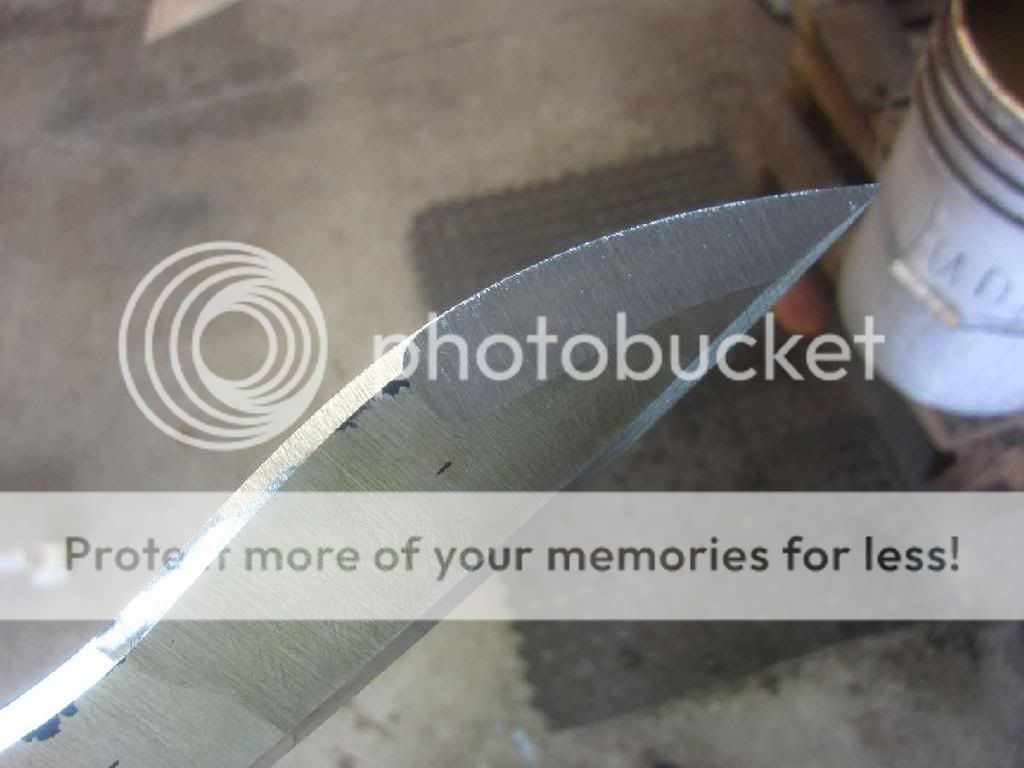- Joined
- Jun 16, 2012
- Messages
- 368
I'm sure there are multiple ways to tackle this problem, I'm just wondering how you guys suggest adding the curve.
I had fun making a tanto and the end result came out much nicer than I expected. I enjoyed both that blade style and the handle. A moment of boredom had me ordering a 36"x1.5"x0.3" piece of L6 to ruin. Not wide enough to grind a curve in and not the kind of steel to use clay and water (I'm not that brave anyway). I'm not going for traditional, just functional, but some degree of curve (sori) is darn near required to visually identify as a "katana". Any advice is greatly appreciated.
I had fun making a tanto and the end result came out much nicer than I expected. I enjoyed both that blade style and the handle. A moment of boredom had me ordering a 36"x1.5"x0.3" piece of L6 to ruin. Not wide enough to grind a curve in and not the kind of steel to use clay and water (I'm not that brave anyway). I'm not going for traditional, just functional, but some degree of curve (sori) is darn near required to visually identify as a "katana". Any advice is greatly appreciated.


